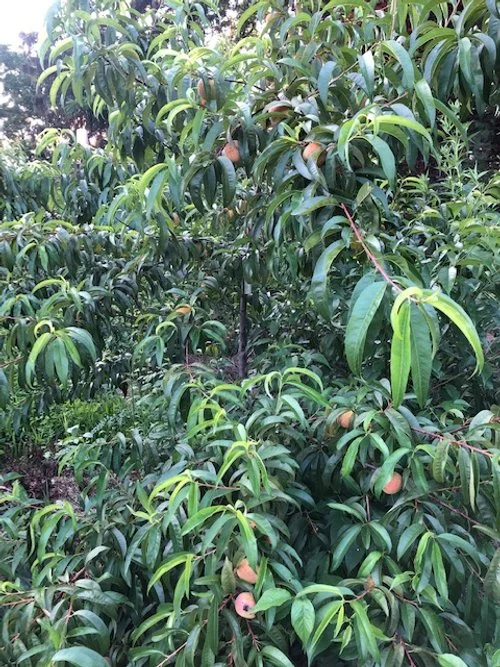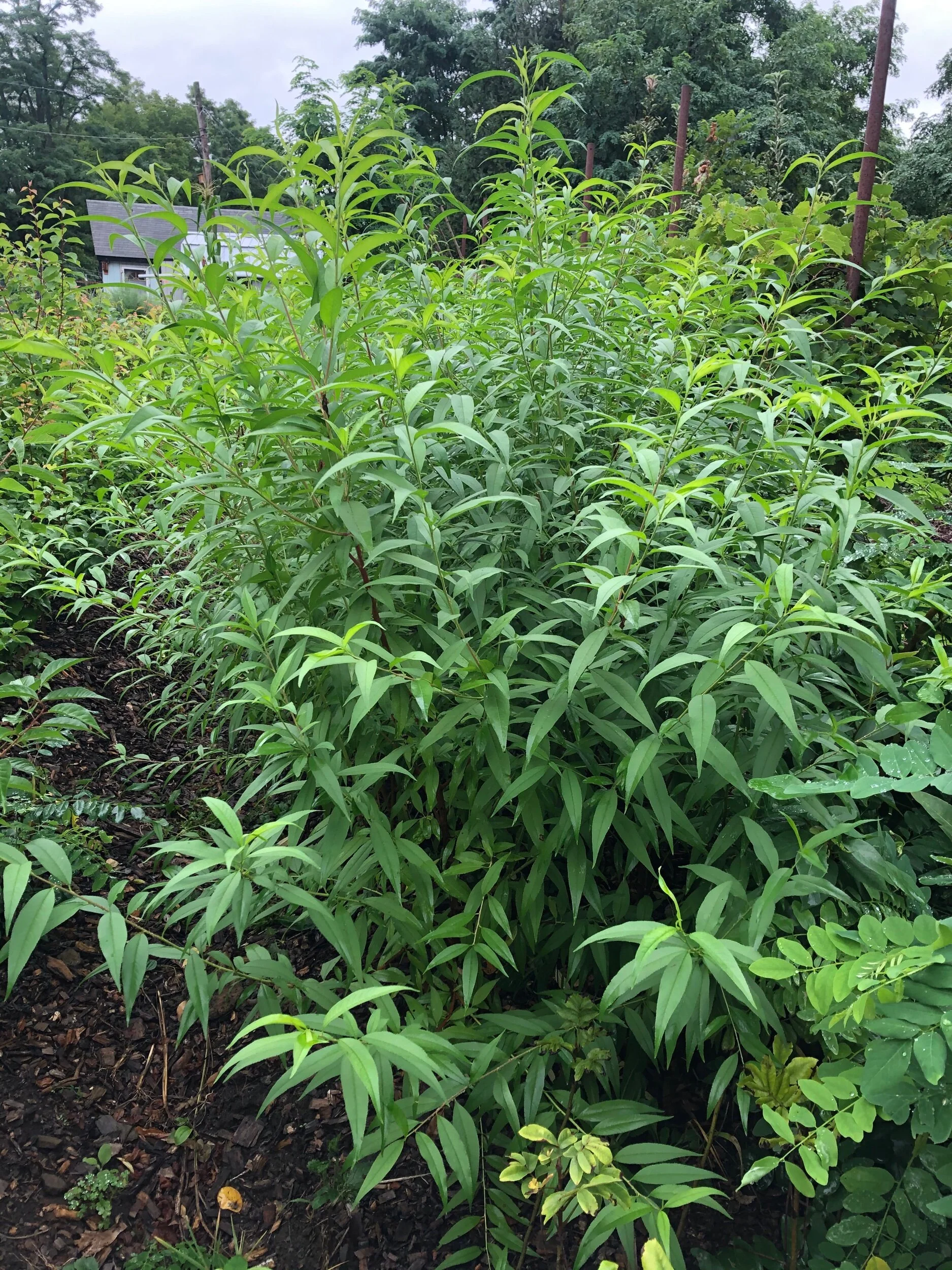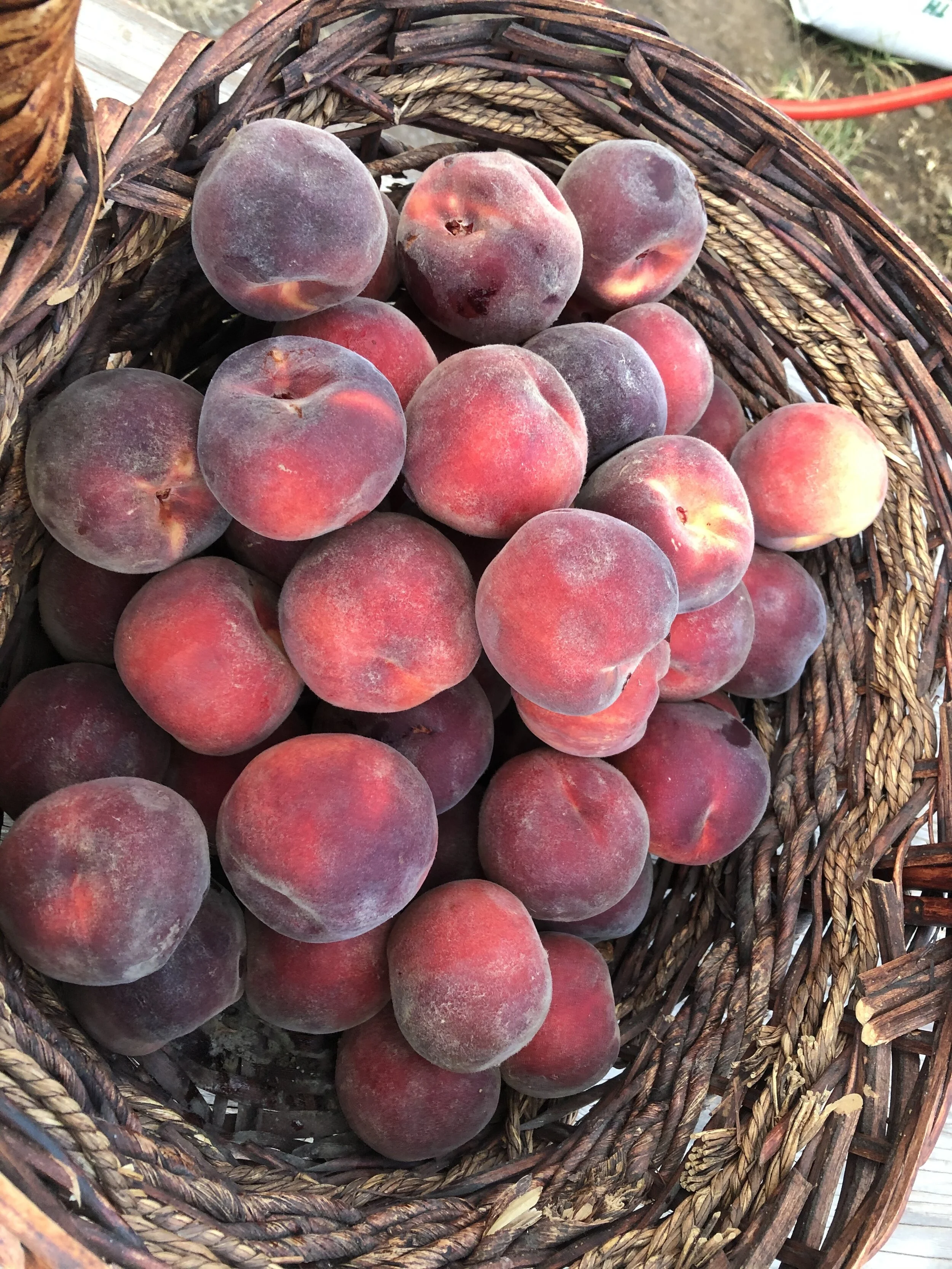Peach


Peach
Who doesn't love peaches? Often, peach trees grow with vigor for a few years and then start to show signs of disease and pest pressure. In my experience, siberian C peaches outgrow all the other varieties, and have evolved means to escape the damage of plum curculio, the main challenger to most stone fruit crops.
There are many pests and diseases that can cause problems with peaches. Interestingly, peaches were one of the original “invasive species” in North America. When they were brought here by europeans, pests and diseases couldn't recognize them. There are numerous historical reports of abandoned fields from Georgia to Massachusetts coming into peaches with no planting whatsoever, purely of their own accord. Many Native Americans had their own peach groves and tended specific types and grew them anywhere horticulture was practiced. Mobby was a drink made of fermented peaches. After nearly 100 years of a free ride, the insects and fungi that infect our native Prunus species figured it out, and the growing peach industry changed entirely. Now, peaches get so many problems that it’s difficult to grow them without chemicals, which is what I (and I imagine you!) do. One of the main problems is that peaches went through a genetic bottleneck. All the varieties you may have heard of all come from a very narrow window of parentage, which is why I am interested in far-flung genetics. Prunus davidiana, for example, is a close relative of peaches but quite different in its resilience to pests and diseases. Nemaguard is a hybrid of P. davidiana and P. persica. I am actively looking for more varieties that are outside the norm to help adapt to modern pressures.
I think it would be pretty nice to find feral peach trees in and among the wild vegetation, and siberian C is well equipped to do it!

